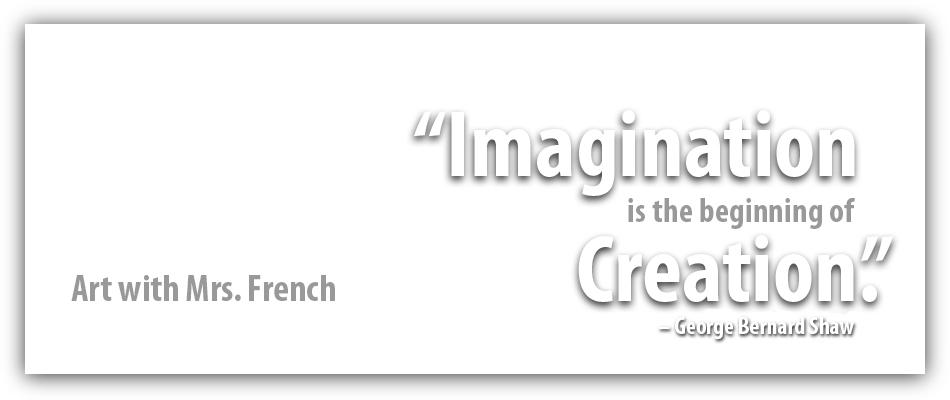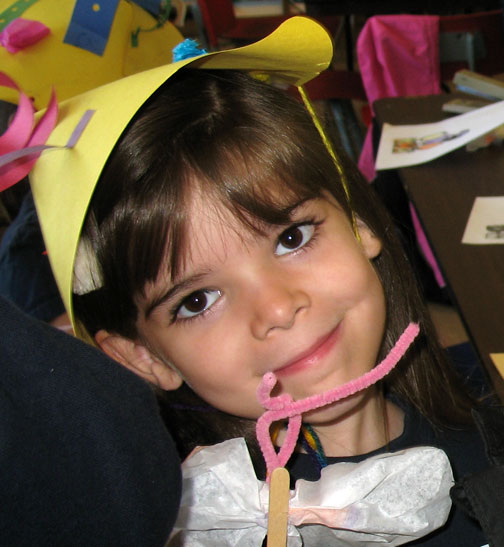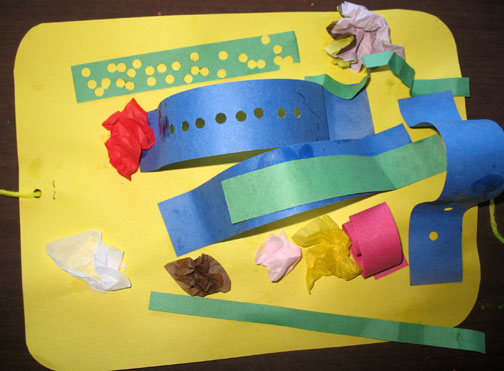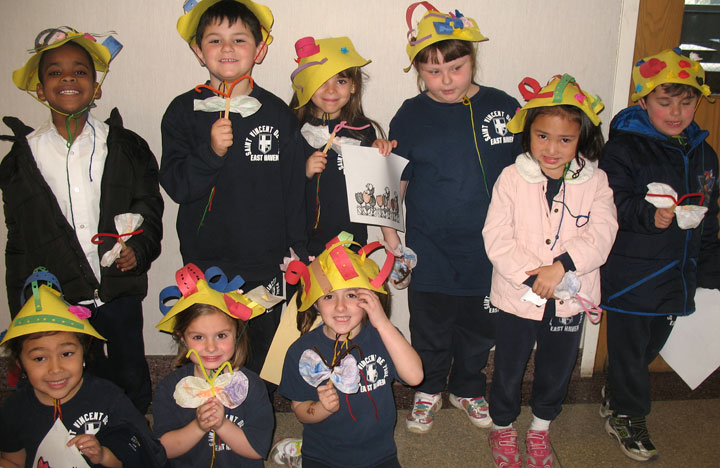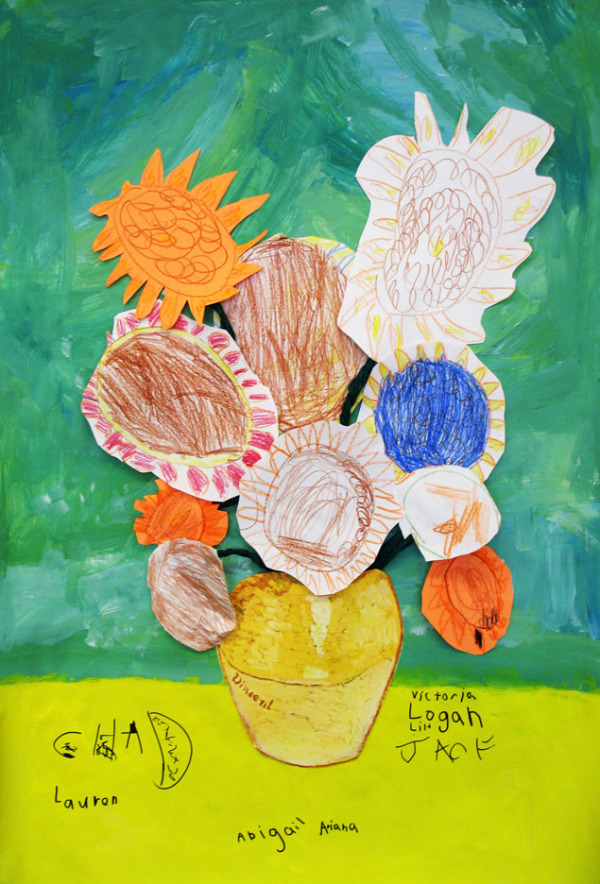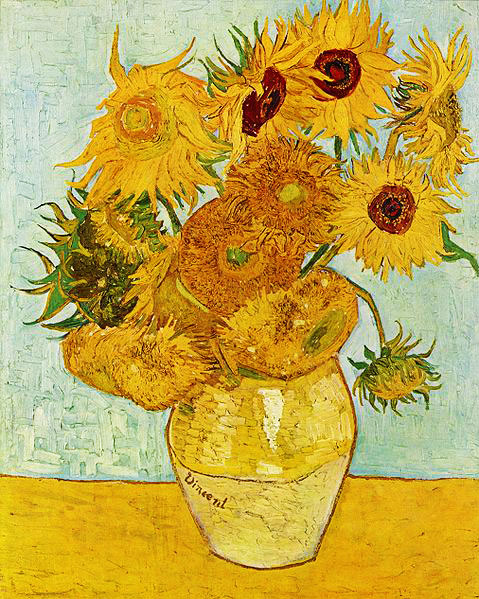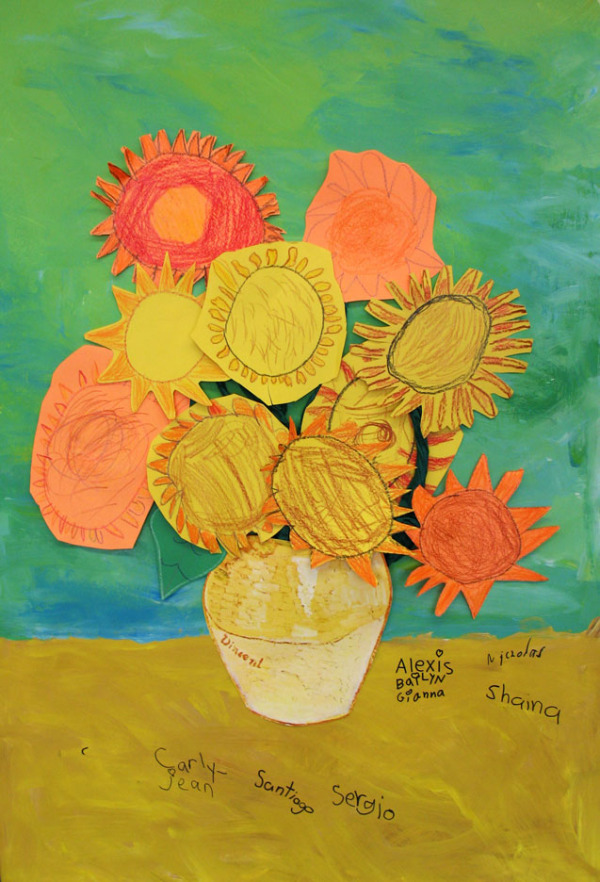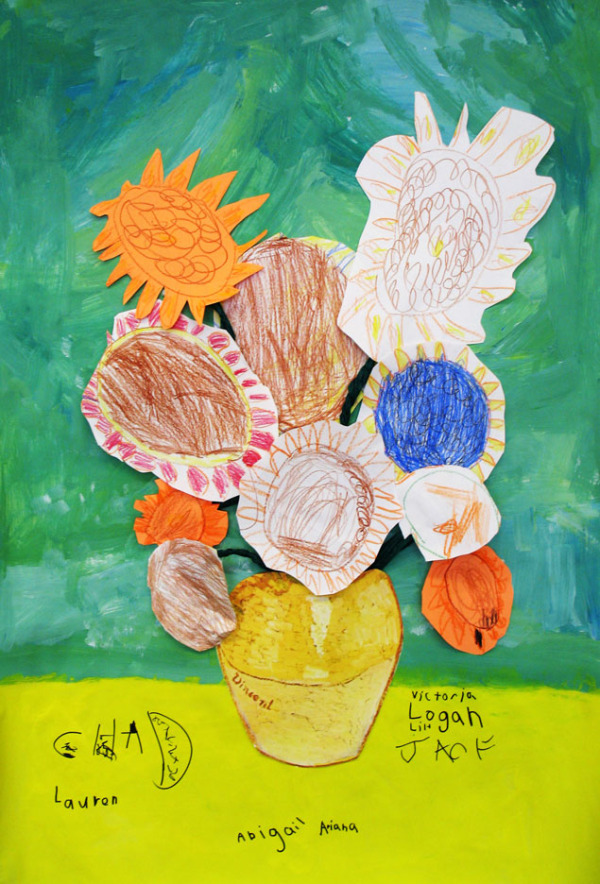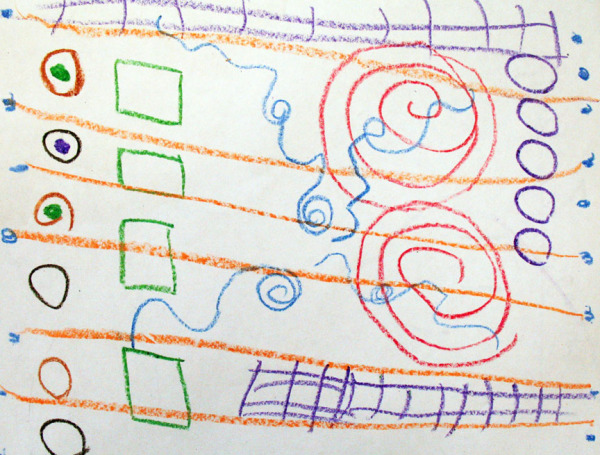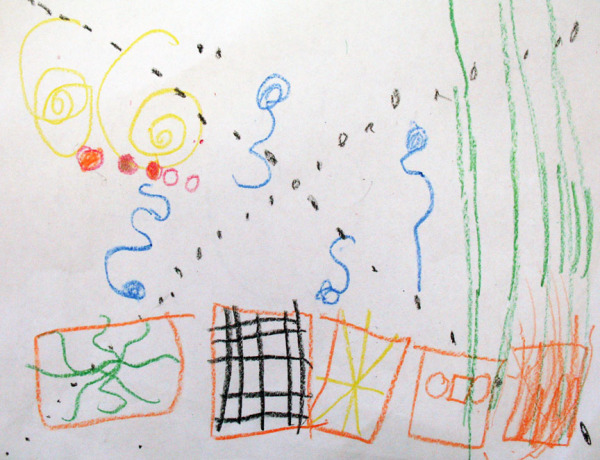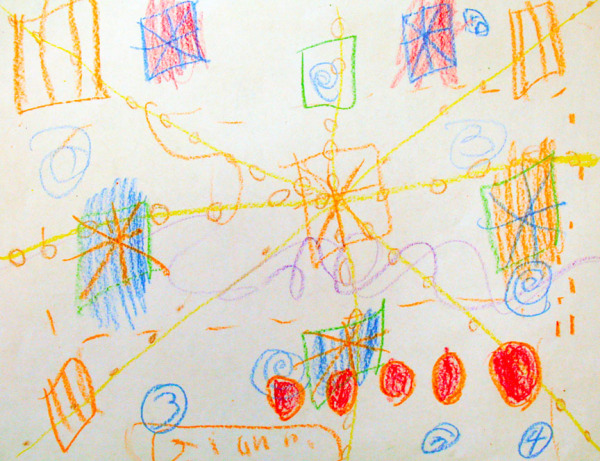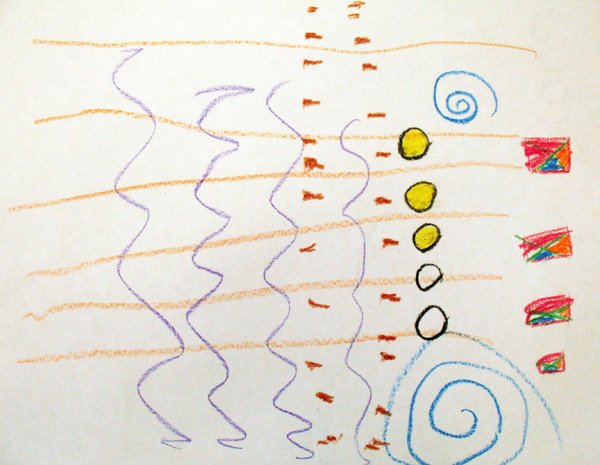Winding Perspective Drawings
 Thursday, April 26, 2012 at 12:27PM
Thursday, April 26, 2012 at 12:27PM Our grade seven class is completing an interesting project using one point linear perspective. Linear perspective is a system of drawing in which the artist attempts to create the illusion of three-dimensions on a two-dimensional surface. The invention of linear perspective dates to the early 1400s, with the Italian Renaissance architect Filippo Brunelleschi's experiments in perspective painting. Click here for a bit more about him from the National Gallery of Art.
Here our artists chose five shapes whose sides had to converge on a central vanishing point. They had to wind a thread-like object of their choice through the “floating” shapes and create an environment or setting for them. Click on any image to see more drawings.
